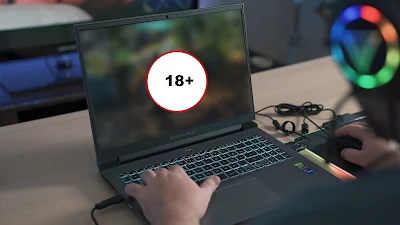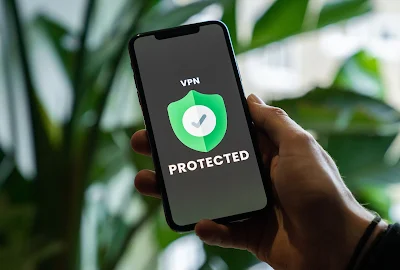Pornware is a malicious software that delivers pornographic content to a user's device. Unlike traditional malware, it is not just limited to the adult NSFW websites; it can target anyone. Pornware can come in different forms, but some variants are more dangerous than others. For instance, years ago, when everyone used dial-up internet, porn-dialers were quite common. Once on the victim's computer, these malicious programs would repeatedly dial premium numbers and rack up the phone bill.
Today, pornware mostly revolves around serving unsolicited adult advertisements. In some cases, pornware can be more dangerous than just delivering unwanted adult ads. For example, in 2019, researchers at the cybersecurity firm ESET discovered a dangerous pornware called Varenyky that was targeting users of Orange S.A, a French internet service provider. The malware was initially used to send out spam offers, but the hacker group behind it eventually started using it to record the victims' desktops whenever they visited a particular adult site, then blackmailed and extorted the victims.
Pornware can also affect smartphones. In 2018, Check Point
discovered a pornware variant that spread through several popular mobile apps.
These apps, most of them meant for children, were legitimate software available
on the Google Play Store. Dubbed AdultSwine, this malware displayed adult ads
and tried to trick users into making purchases. The thought of a child being
shown explicit content is horrifying enough, but it should be noted that pornware
can cause serious damage to anyone, just like other malware. It can cause
software malfunctions, steal sensitive information, harm your system, slow down
your device, and so on.
How Does Pornware Work?
As mentioned earlier, pornware is a type of malware that
delivers pornographic content to a user's device. It can come in different
forms, but most commonly, it serves unsolicited adult advertisements or
redirects users to certain adult sites, thereby generating ad revenue for the
perpetrator. Pornware can also cause serious damage by stealing sensitive
information and recording the victims' desktops, which can be later used for
blackmailing and extortion.
How to Remove Pornware from a Device
Pornware is a unique, annoying, and potentially dangerous threat. The good news is that it can be dealt with and removed like other malware. In most cases, you won't need the help of an IT professional. However, if you feel overwhelmed or aren't exactly a computer expert, there's no shame in asking for assistance.
If there's pornware on your computer, your antivirus suite obviously failed to catch it for some reason. Whether you've got a Windows machine or a Mac computer, the first thing you need to do is get your hands on a decent malware removal tool. If you believe there's an issue with your browser, carefully examine if there are any suspicious extensions, clear your cache and cookies, and restart your browser settings. Reinstalling the browser might also help.
If your smartphone is infected with pornware, you need to identify the source first. Review the apps you have installed and take note of any software you can't recall downloading. Removing the app (or file) would obviously be the next step, but it's not always that simple. If the pornware is stubborn, you might have to use an antivirus app. If all else fails, factory resetting your phone might be your only option. Keep in mind that this restores your device to the state it was originally in, so make sure you back up any important files first.
Protect Yourself From Pornware: 7 Tips
Pornware is a type of malware that can infect your device
and cause serious harm. While knowing how to remove it is important, prevention
is even better. Here are five tips to help you avoid pornware infections:
1. Keep Your Software Up to Date: It's crucial to have
strong anti-malware protection on your computer and smartphone, but keeping
your software updated is equally important. Be sure to update your operating
system and antivirus software regularly to keep your device secure.
2. Use a Secure Browser: Your browser is your gateway to the
internet, so using a secure browser can make a big difference in protecting you
from pornware and other threats. Consider using a browser such as Brave or
Firefox instead of the default browser on your device to help preserve your
privacy.
3. Avoid Shady Websites: No matter how good your antivirus
software and browser are, visiting untrustworthy websites puts your device at
risk. It's best to stay away from suspicious sites altogether. If you come
across a website that appears to be a scam or is spreading malware, report it
immediately.
4. Don't Click Suspicious Links: Clicking on links from
unknown or untrustworthy sources can lead to pornware infections and other
problems. Always be cautious and avoid clicking on links that seem suspicious.
Take a few seconds to verify whether a link is safe before clicking on it.
5. Check Email Attachments: Pornware is often spread through
email attachments. Make sure to double-check all attachments, even if they
appear to be from a trusted source. Be extra cautious if you receive unexpected
or unsolicited emails with attachments.
6. Use a VPN: A VPN, or virtual private network, is a tool
that encrypts your internet connection and hides your IP address, making it
more difficult for hackers to track your online activity. Using a VPN can be
especially helpful when accessing NSFW websites, as it provides an additional
layer of privacy and security.
7. Educate Yourself and Others: Finally, one of the best
ways to protect yourself from pornware is to educate yourself and others about
the dangers of malware. Make sure you understand the risks, and take steps to
protect your device and personal information. Share your knowledge with friends
and family members, and encourage them to do the same.
In conclusion, pornware is a type of malware that delivers
unsolicited pornographic content to a user's device. It can be dangerous,
causing software malfunctions, stealing sensitive information, and more.
However, it can be removed and prevented with the right tools and knowledge. By
keeping your software up to date, using a secure browser, staying away from
shady websites, never clicking suspicious links, double-checking all email
attachments, using a VPN, and educating yourself and others, you can protect
yourself from pornware and other cybersecurity threats.
Tags: Pornware, Malware, Cybersecurity, Advertisements, Adult content, Virus removal, Mobile apps, Antivirus software, Browser security, VPN, Cyber threats, Internet security.


